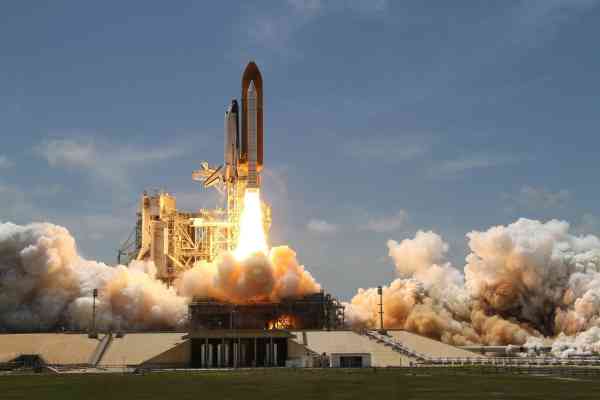June 16th, 2020 | 11:34 CEST
Barrick, Desert Gold, Endeavour Mining - Who benefits from the gold shortage?
The production of gold is expected to reach its historic peak this year and from then on it will go down more or less dramatically. While the production of the largest producers was still below 80 million ounces in 2009, since then it has risen almost linearly to the volume of over 117 million ounces forecast for 2020. In 2029, not even 55% of this quantity is expected to be reached - with consequences for the gold price.
time to read: 2 minutes
|
Author:
Mario Hose
ISIN:
CA25039N4084 , CA0679011084 , KYG3040R1589
Table of contents:

"[...] The transaction offers benefits to all parties: Shareholders now have three promising projects in their portfolio. [...]" Bradley Rourke, President, CEO and Director, Scottie Resources Corp.
Author
Mario Hose
Born and raised in Hannover, Lower Saxony follows social and economic developments around the globe. As a passionate entrepreneur and columnist he explains and compares the most diverse business models as well as markets for interested stock traders.
Tag cloud
Shares cloud
No production without exploration
Anyone who wants to mine gold has to find it first. The origin of all gold production is exploration. Once the gold is discovered in the ground, the next step is to determine the size of the reserves. The goal of exploration companies is usually to discover quantities of gold in the ground that will allow the project to develop into an economically attractive production.
Replacement for mined reserves
Without success in exploration, mining will not be possible. For this reason, the big gold producers often keep an eye on the exploration scene, especially if they are located in the vicinity of producing mines. Everything that has been mined in the gold mine is logically gone. Conversely, the producers' reserves decrease with every ounce sold. This scenario is not abstract, but already reality. Since 2012, the reserves of the biggest producers have dropped 34% from 967 million ounces to 584 million ounces in 2019. The level of reserves is now less than in 2007 - before the first gold boom in conjunction with the financial crisis.
Quality has its price
Increased requirements and quality demands in connection with image building are also a major burden on production. As a result of accidents and environmental damage, producers and authorities have increased requirements and standards. In 2000, it took ten years before a discovery could go into production and ten years later the duration has increased to 20 years. In the meantime, it is expected to take 30 years before a discovery goes into production.
Exploration benefits from rising prices
The declining reserves of the producers let the prices for the take-overs of exploration companies rise as the gold price rises. The pressure on producers to act is constantly increasing. The exploration company Desert Gold Ventures has projects covering an area of 400 km2 in Mali. The company is surrounded by the following large mines: Fekola 7 million ounces, Gounkoto 4.4 million ounces, Loulo 9.8 million ounces, Sadiola 8.1 million ounces, Takakoto & Segala 3.3 million ounces and Yatela with 3.5 million ounces.
Attractive takeover prices in Africa
Desert Gold's prominent neighbors include B2Gold, Barrick Gold, Endeavour Mining and Resolute. As the exploration company has already discovered several gold prospects (2.04 g/t Au over 30 m, 3.03 g/t Au over 8 m and 6.28 g/t Au over 13 m), it stands to reason that the likelihood of an investment or acquisition by a producer from the region increases with further success from drilling programs. In 2018, takeovers in Africa averaged USD 200.33 per ounce in the ground. According to the presentation on the website, management is aiming for the discovery of up to six million ounces.
Conflict of interest
Pursuant to §85 of the German Securities Trading Act (WpHG), we point out that Apaton Finance GmbH as well as partners, authors or employees of Apaton Finance GmbH (hereinafter referred to as "Relevant Persons") may in the future hold shares or other financial instruments of the mentioned companies or will bet on rising or falling on rising or falling prices and therefore a conflict of interest may arise in the future. conflict of interest may arise in the future. The Relevant Persons reserve the shares or other financial instruments of the company at any time (hereinafter referred to as the company at any time (hereinafter referred to as a "Transaction"). "Transaction"). Transactions may under certain circumstances influence the respective price of the shares or other financial instruments of the of the Company.
Furthermore, Apaton Finance GmbH reserves the right to enter into future relationships with the company or with third parties in relation to reports on the company. with regard to reports on the company, which are published within the scope of the Apaton Finance GmbH as well as in the social media, on partner sites or in e-mails, on partner sites or in e-mails. The above references to existing conflicts of interest apply apply to all types and forms of publication used by Apaton Finance GmbH uses for publications on companies.
Risk notice
Apaton Finance GmbH offers editors, agencies and companies the opportunity to publish commentaries, interviews, summaries, news and etc. on news.financial. These contents serve information for readers and does not constitute a call to action or recommendations, neither explicitly nor implicitly. implicitly, they are to be understood as an assurance of possible price be understood. The contents do not replace individual professional investment advice and do not constitute an offer to sell the share(s) offer to sell the share(s) or other financial instrument(s) in question, nor is it an nor an invitation to buy or sell such.
The content is expressly not a financial analysis, but rather financial analysis, but rather journalistic or advertising texts. Readers or users who make investment decisions or carry out transactions on the basis decisions or transactions on the basis of the information provided here act completely at their own risk. There is no contractual relationship between between Apaton Finance GmbH and its readers or the users of its offers. users of its offers, as our information only refers to the company and not to the company, but not to the investment decision of the reader or user. or user.
The acquisition of financial instruments entails high risks that can lead to the total loss of the capital invested. The information published by Apaton Finance GmbH and its authors are based on careful research on careful research, nevertheless no liability for financial losses financial losses or a content guarantee for topicality, correctness, adequacy and completeness of the contents offered here. contents offered here. Please also note our Terms of use.




